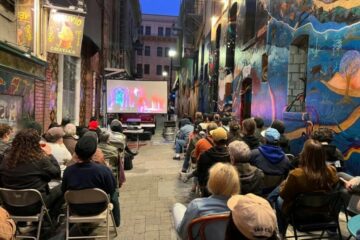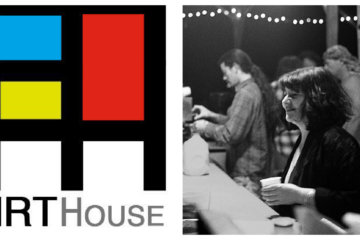11 Reasons to Build Accessory Dwelling Units Before Another High Rise

A cute little ADU! (image from Accessory Dwellings)
Yes, the city needs more housing, and here are 11 reasons why Accessory Dwelling Units are a better alternative to high rises.
The city’s housing crisis triggers endless arguments about what to do. Opinions run the gamut from the build-build-build school of thought to the protectors of the status quo, with a lot of acrimony in each camp. Everyone has something to say about what we should do, and so do I: there are 11 good reasons for promoting the development of Accessory Dwelling Units (ADUs) before building another high-rise.
#1: ADUs Are Not Contentious
The discussion of ADUs before high-rises begins with this reason: there’s no contention. No one is protesting ADUs. In a culture where there’s already too much antagonism, it seems more than reasonable to start fixing a problem with an option that doesn’t incite protest or invite displacement, and one that increases density without unpopular construction. Almost every residential lot in the city, other than those at the corners, has a back yard. Most houses, in neighborhoods like the avenues, have garages that are the same size as the house’s square footage, half of which could be a charming garden apartment.
Having lived my whole life (minus college) in this city, watching the tide of booms and subsequent busts, it seems to me that the very best thing to do is move forward quickly with the construction of ADUs. ADUs make it possible to convert existing spaces, like garages or illegal units, or to construct small units in backyard spaces in neighborhoods opposed to high-rise construction.
#2: We’re Building For a Boom
We are currently in one of those booms. But in about three years, the mayor’s tax incentives—that brought so many companies to the city, with their well-paid employees in need of housing—are going to dry up. And then, how many of those companies are going to be relocating to Nevada, or other places, where the taxes are moderate or nil, there are fewer regulations, and real estate is relatively cheap, leaving us with all these brand new market rate apartments and condos with a lot of offshore buyers? The city is already contriving Plan B, what they’re going to do when things fall apart next time, perhaps when the tax incentives disappear.
#3: Keeping People in Their Homes
A lot of people in this city have a single asset, a house, which was either inherited or purchased before real estate reached death-of-capitalism prices. In spite of the fact that owning a home in the city seems like sitting on a gold mine, if it’s where you live, you can’t expect to sell it and find another similar place you can afford, if you work at one of those jobs that doesn’t pay six figures, or you’re retired. As the cost of living escalates, even those “privileged” homeowners, especially ones living on social security or disability, could probably use some extra income. The city could possibly make money loaning homeowners the funds to plunk a little pre-fab in their garden.
One of my friends has a single asset, a house that she now has to sell because her mother’s health care is so expensive. When it sells, she will pay the same percentage of capital gains taxes as an immensely wealthy person pays when selling a mansion. But if she had an extra source of income from the property, she might be able to keep her house and make room for tenants. It’s the same argument used to justify Airbnb: making it possible for people to afford to stay in their homes.

Well this one is quite lovely! image from zillow
#4: Developers Capitalize on Problems Created By Corporate Predators
Airbnb, of course, brings up another reason why the push for additional housing is so dire. The city’s in a hot mess trying to regulate the consequences of allowing a company valued at over $25 billion to do whatever they like here. It’s no secret that people buy buildings and evict all the tenants to use the units for short-term rentals, or turn them into dormitories at exorbitant rents. If there were fewer illegal short term rentals, there would be more available spaces for residents. Airbnb takes an unknown but clearly large number of residences out of the housing stock, and the first thing we do is let other corporations build incredibly expensive big boxes that people displaced by Airbnb can’t afford.
#5: We Need Housing for the Service Industry Workers in a Service Economy
Yet another reason for ADUs is that there is an overwhelming need for low-cost housing, and developers don’t want to build it because there’s no real money in it. (Currently, one developer agreed to build some, but only if they could also build market rate units on the same land.) We desperately need low-cost housing because workers in the service industries are priced out, the labor pool is drying up, and businesses are closing. It’s inane to live in a service economy where there’s no place for waiters, cleaners, shoemakers, EMTs, orderlies, baristas, writers, or other useful people to live. ADUs are quickly constructed and a boon for lower income tenants. Moving forward to get ADUs in place will stop the exodus of service providers and keep those services available. High-rise construction’s “affordable” units are only within reach for people making formerly middle class incomes—that once enabled people to buy homes.
#6: The City Could Make Some Money
ADUs offer the city an opportunity to make money. There are many small parcels of land that go unused, like the terraced back yards on Turk Street, heading west from Baker, that have been covered with weeds for more than 30 years. They are perfect lots for split-level container house construction, or single container studios. (I hear the groans from anti-container house contingent as I write.) Container houses are very cheap to build, solid, mobile, and almost instantaneous to construct. Perhaps the city could buy that weed-covered land (or just snatch it through eminent domain), build a container house village along the Turk Street 31 Muni line, and make hundreds of really affordable units available in months. Or perhaps those landowners would like to do it themselves, on a city loan or private funds. It would cost less than Super Bowl City, and it offers significant short or long-term profit, depending on whether units are bought or rented. It gives more people a chance to stay or own a relatively inexpensive place.

Awesome shipping container home (image from imgur)
#7: Stopping Displacement
Starting with ADU construction stops displacement. Almost every time a major construction project is approved, people lose their homes and businesses. The Beast on Bryant project, which was just approved by the Planning Commission, was home to Cellspace, a legendary art collective where some of the city’s globally significant art movements (e.g. Burning Man) fermented. We have a short view of history, seeing only historic cultural artifacts as significant. We are failing to see how places in our recent history will have cultural meaning for generations after us. When future historians write the history of San Francisco in the late 20th century, they will note what is gone: the vast majority of the city’s creative culture, which affected global culture in so many ways. Perhaps the most famous arts collective in the city’s history, The Montgomery Block—a place where hundreds of internationally, insanely famous artists and writers—people like Mark Twain and Frida Kahlo— lived and worked for a hundred years—was torn down to accommodate Bank of America world headquarters. No one would dream of tearing down the Chelsea Hotel, but San Francisco’s iconic cultural remnants don’t stand a chance.
#8: Preserving the City’s Character
As we tear down bits of the old city to build big boxes of overpriced luxury apartments, we take away from what made the city so attractive, its intimacy and charm. Once the swaths of land are devoted to monolithic construction, there is no going back. We become increasingly Manhattanized and lose exactly what people have always loved about this city. ADUs disrupt nothing and maintain the charm, while increasing the density. ADUs don’t have to be unattractive, either; they can be made sufficiently beautiful for high-end tenants.
#9: Reducing Income Disparity
ADUs also help address income disparity, putting money in the hands of middle class citizens, instead of in the hands of real estate developers, who are a lot less likely to be feeling the pinch. Developers have made something of a killing here already, and perhaps we need to look at solutions that give someone else a chance to make a few dollars. You may own a house in the city, but your salary or pension, which looked pretty good a few years ago, now looks like chump change. A second source of income, or a place to park the offspring moving back in with mom and dad, can relieve a great deal of financial stress.
If half the people in this city who had space for an ADU built one, it would provide many thousands of new units far more quickly than the construction of a giant high-rise. And if suddenly there were thousands of available ADUs, perhaps we wouldn’t have a housing crisis any more.

A rendering of where a new ADU is going in at a home in the Bay Area. (image from The Atlantic)
#10: We Have All The Luxury Apartments We Need Already
According to the first quarter 2016 Residential Pipeline of Entitled Housing Units for San Francisco, we have already produced 157.5% of all the “above moderate” housing we need. The Beast on Bryant would be a potential but gratuitous windfall for developers and the foreign oligarchs who might shelter money there. However, the global economic slowdown is making it hard to sell those luxurious shelters, so it becomes hard to imagine cui bono, except the developers and investors who will have a big loss to offset taxes, just in case there aren’t enough oligarchs left.
#11: Nobody’s sunlight is blocked anywhere.
So, In Conclusion
I’m sure there are real estate developers who are wonderful people, but the reality is that developers are in the game to make money for themselves and their investors. If big money weren’t all-important, they’d be building those “financially unfeasible” low-cost housing structures we need. And yet, this city rolls over to developers. If they can’t make enough money just building affordable housing, well, then we just won’t get any, unless we also let them build what they want. Only one firm, David Baker Architects, has designed and built many low cost units in the bay area.
We have locked ourselves into one image of The Way Things Are And Will Ever Be, in a city with a $9b-plus annual budget. We could be pursuing creative alternatives. Instead, we get trapped into battles over what gets destroyed to build for the people who will probably be gone when Lee’s tax incentives run out. Our culture is already dissolving in a fetid stew of special interests, corruption, politics, existential dread, and all the anti-isms, and the last thing we need is further antagonism over who gets to stay and who has to go. We can make this a non-issue by empowering local citizens to be part of the housing solution and also help themselves. We can release a little pressure in this city by encouraging the swift provision of ADUs in every way possible. If having thousands of small and relatively inexpensive units on the market doesn’t relieve things significantly, then we should talk about more high rises.
The ADU pictured above was built by Walt Quade, https://accessorydwellings.org/2012/02/14/a-sister-in-law-house/









